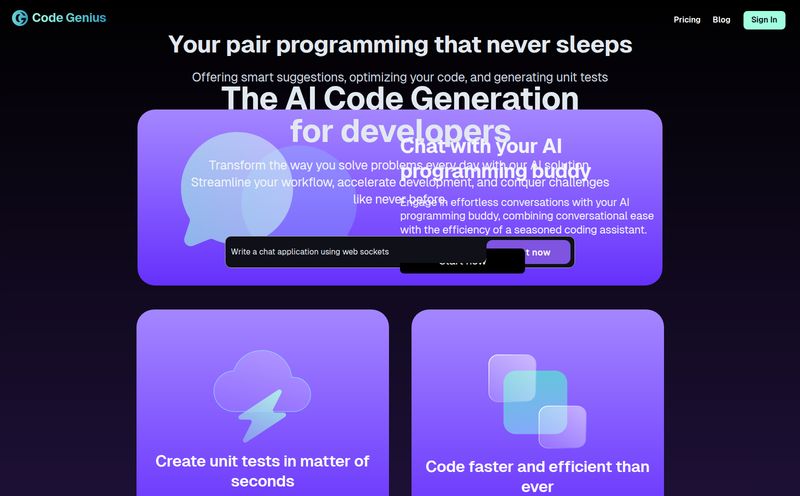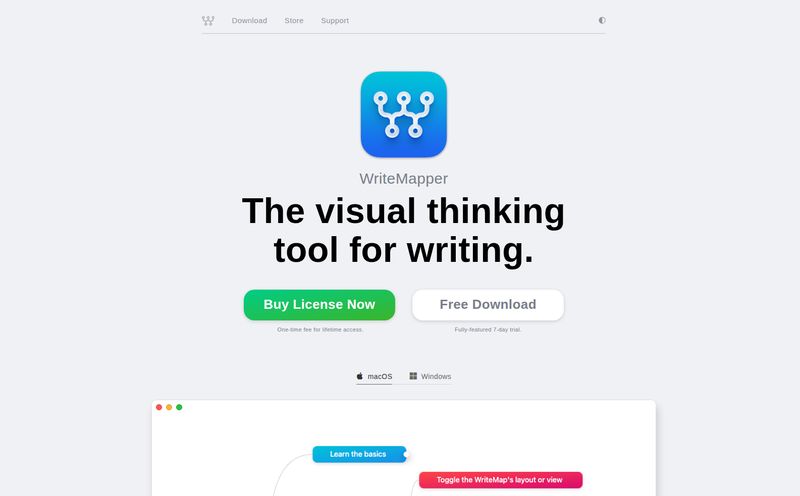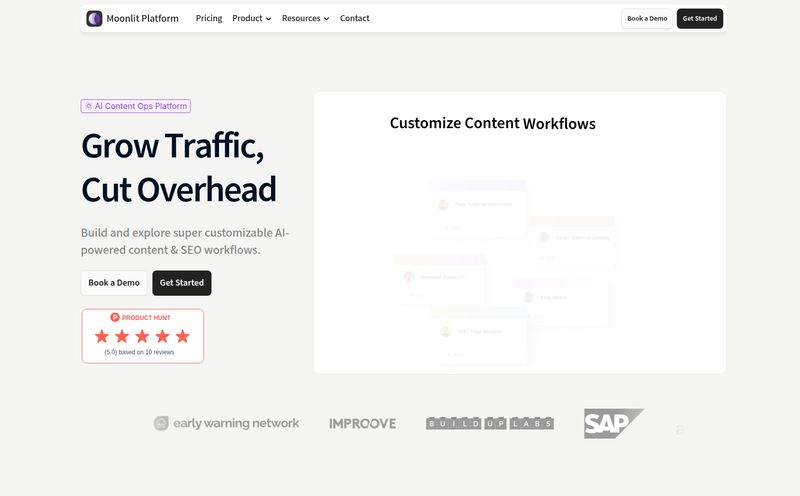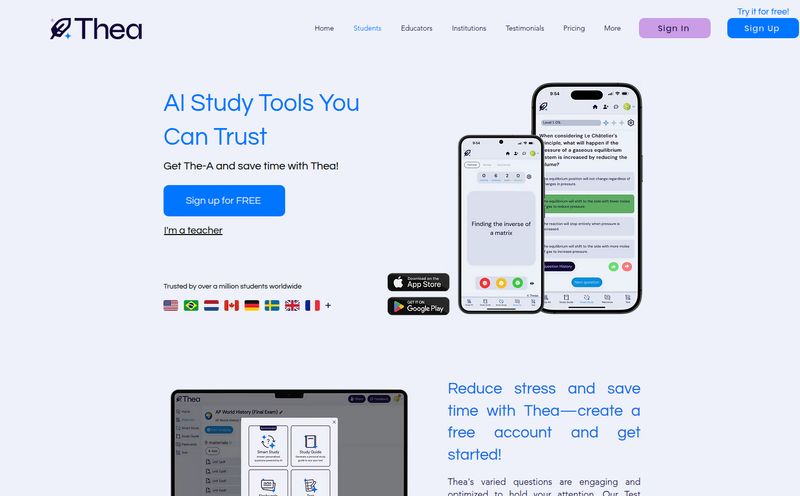If you've spent any time in the software world, you know the drill. The developers code up a storm, the product manager is buzzing with excitement, and then everything slams to a halt. Why? Testing. The great bottleneck. The necessary, often tedious, and sometimes soul-crushing process of making sure things don't fall apart the second a real user touches them.
For years, the solution was to either hire an army of manual testers or invest heavily in automation engineers who could write complex scripts. Both are expensive and slow. I've been in the trenches, wrestling with brittle Selenium scripts that break if a developer so much as changes a button's color. It's a grind. But what if it didn't have to be? What if you could just… tell a machine what to test, and it just did it? That’s the promise of tools like BotGauge, and I have to admit, I’m intrigued.
So, What is BotGauge, Really?
Strip away the marketing jargon, and BotGauge is a test automation platform powered by generative AI. Think of it as a super-intelligent intern for your QA team. Its main goal is to make software testing faster, cheaper, and way more accessible. How? By pretty much eliminating the need to write code.

Visit BotGauge
This isn’t just another record-and-playback tool. BotGauge claims it can read your Product Requirements Documents (PRDs), look at your UX designs, and automatically generate the tests for you. This is a game-changer because it opens up the world of test automation to people who aren't hardcore coders—think project managers, business analysts, and even manual QA folks who want to up their game. It aims to handle the whole shebang: UI testing, API calls, functional workflows, and even database checks, all from one place.
The Features That Actually Matter
A platform is only as good as its features, right? I've seen countless tools that promise the moon and deliver a lump of rock. Here's what caught my eye with BotGauge.
Intelligent Test Generation: Your AI Co-Pilot
This is the headline act. The idea that you can feed the AI your documentation and it spits out a comprehensive test plan is… well, it's wild. It’s like having a junior QA engineer who doesn't need to sleep and has read every piece of documentation you've ever written. For agile teams moving at a breakneck pace, the time saved here could be enormous. Instead of spending a sprint writing tests, you’re spending it reviewing and running them. That's a huge shift in workflow.
Say Goodbye to Brittle Tests with "Zero Maintenance"
Anyone who's managed an automation suite knows the pain of test maintenance. A button ID changes, a workflow is tweaked, and suddenly half your tests are failing for no good reason. BotGauge’s answer to this is auto-healing. It’s a smart system that recognizes when an element on the page has changed and updates the test script on its own. It's not magic, and I'm sure it has its limits, but moving away from tests that shatter at the slightest touch is a massive quality-of-life improvement.
Comprehensive Testing Under One Roof
I’ve worked in environments where we had one tool for UI tests, another for API checks, and a bunch of custom scripts for everything in between. It was a mess. BotGauge supports UI, functional, API, and database testing in a single platform. This consolidation is more than just convenient; it means you can build true end-to-end tests that follow a user's action from the front end all the way to the database and back again. That’s how you catch the really tricky bugs.
The Good, The Bad, and The AI
No tool is perfect. Let's get down to the nitty-gritty. What's great, and what’s the catch?
The Upside: Why I'm Genuinely Excited
For me, the biggest win here is the democratization of testing. By making it no-code, BotGauge breaks down the ivory tower that has kept automation in the hands of a few specialists. Suddenly, the people who understand the product best—the PMs and BAs—can directly contribute to its quality assurance. The combination of AI test generation and auto-healing attacks the two biggest time-sinks in QA: creation and maintenance. That's not a small thing. It could fundamentally change how quickly teams can ship reliable software.
A Few Caveats to Consider
Okay, deep breaths. It's not all sunshine and rainbows. First, the pricing model—"based on concurrent sessions annually"—is a bit corporate. For those unfamiliar, this typically means you pay for how many tests you can run simultaneously. If you’re a small shop running a few tests a day, it might be fine. If you’re a massive enterprise running thousands of parallel tests, the cost could climb. It's a model that rewards efficiency but can be a bit opaque upfront. Second, some of the most powerful AI features, like generating tests directly from a PRD, are locked behind the higher-tier plan. This is pretty standard SaaS practice, but you need to be aware that the full magic requires a bigger investment. Finally, like any new tech, some features might be in beta and have quirks. You're an early adopter, with all the bragging rights and potential headaches that entails.
Let's Talk Money: BotGauge Pricing
So how much will this AI brainpower set you back? BotGauge keeps the exact numbers close to its chest (you'll have to contact them for a quote), but they structure it in two main tiers. The pricing is based on those "concurrent sessions" we talked about, so it scales with your testing volume.
| Plan | Key Features |
|---|---|
| AI Foundation Plan | This is your starting point. You get unlimited users and test cases, 24/7 support, core testing capabilities (UI, API, etc.), NLP-based test authoring, and the crucial auto-healing feature. It's a solid foundation for most teams. |
| Advanced AI Plan | This includes everything from the Foundation plan, plus the really advanced stuff: auto-generated tests from PRDs, UX screen integration, and a dedicated Customer Success Manager to hold your hand. This is for teams that want to go all-in on AI. |
For specific numbers, you'll need to check out their pricing page and likely book a demo.
Who Is BotGauge Really For?
After looking it all over, I think BotGauge is a perfect fit for a few types of teams:
- Fast-Moving Agile Teams: Companies that want to shrink their release cycles from weeks to days by cutting down the testing bottleneck.
- Companies with Limited QA Engineers: If you don't have a deep bench of automation experts, this tool gives your existing team superpowers.
- Product-Led Organizations: Teams where product managers and business analysts want a more direct hand in ensuring software quality, without needing to learn to code.
If your team still sees QA as a separate, slow stage at the end of the development cycle, a tool like this could be the catalyst for change.
Final Thoughts: Is This the Future of QA?
Look, the hype around AI can be exhausting. But every so often, a tool comes along that applies it in a genuinely practical way. BotGauge feels like one of those. It’s not about replacing human testers; it's about augmenting them. It takes away the repetitive, boring, and brittle parts of the job, freeing up humans to do what they do best: exploratory testing, creative problem-solving, and actually thinking about the user experience.
Is it perfect? Probaly not. Is it going to solve all your problems overnight? Definitly not. But it represents a significant step in the right direction. It makes powerful test automation accessible to more people, and in my book, that’s a win. I’ll be keeping a very close eye on this one.
Frequently Asked Questions
- 1. Do I absolutely need to know how to code to use BotGauge?
- Nope! That's the main selling point. It's designed to be a no-code platform, where you can generate tests using plain language and by referencing documents.
- 2. What kinds of software testing can BotGauge automate?
- It's pretty comprehensive, covering UI testing for web apps, functional testing of user workflows, API testing, and even database validation.
- 3. How does the AI test generation actually work?
- It uses Generative AI to analyze your project documents, like Product Requirement Documents (PRDs) and UX/UI mockups, to understand the intended functionality and then creates test cases based on that understanding.
- 4. What does "auto-healing" mean in BotGauge?
- Auto-healing, or smart healing, is a feature where the platform automatically detects changes in your application's code (like a button's ID or location changing) and updates the test scripts so they don't break. This drastically reduces test maintenance time.
- 5. Is BotGauge a good choice for a small startup?
- It could be. The codeless approach is fantastic for small teams without dedicated automation engineers. However, the pricing is based on concurrent test sessions, so you'd want to have a conversation with them to see if the cost structure fits your budget and testing needs.
Reference and Sources
- BotGauge Official Website & Pricing Information: https://www.botgauge.com/



